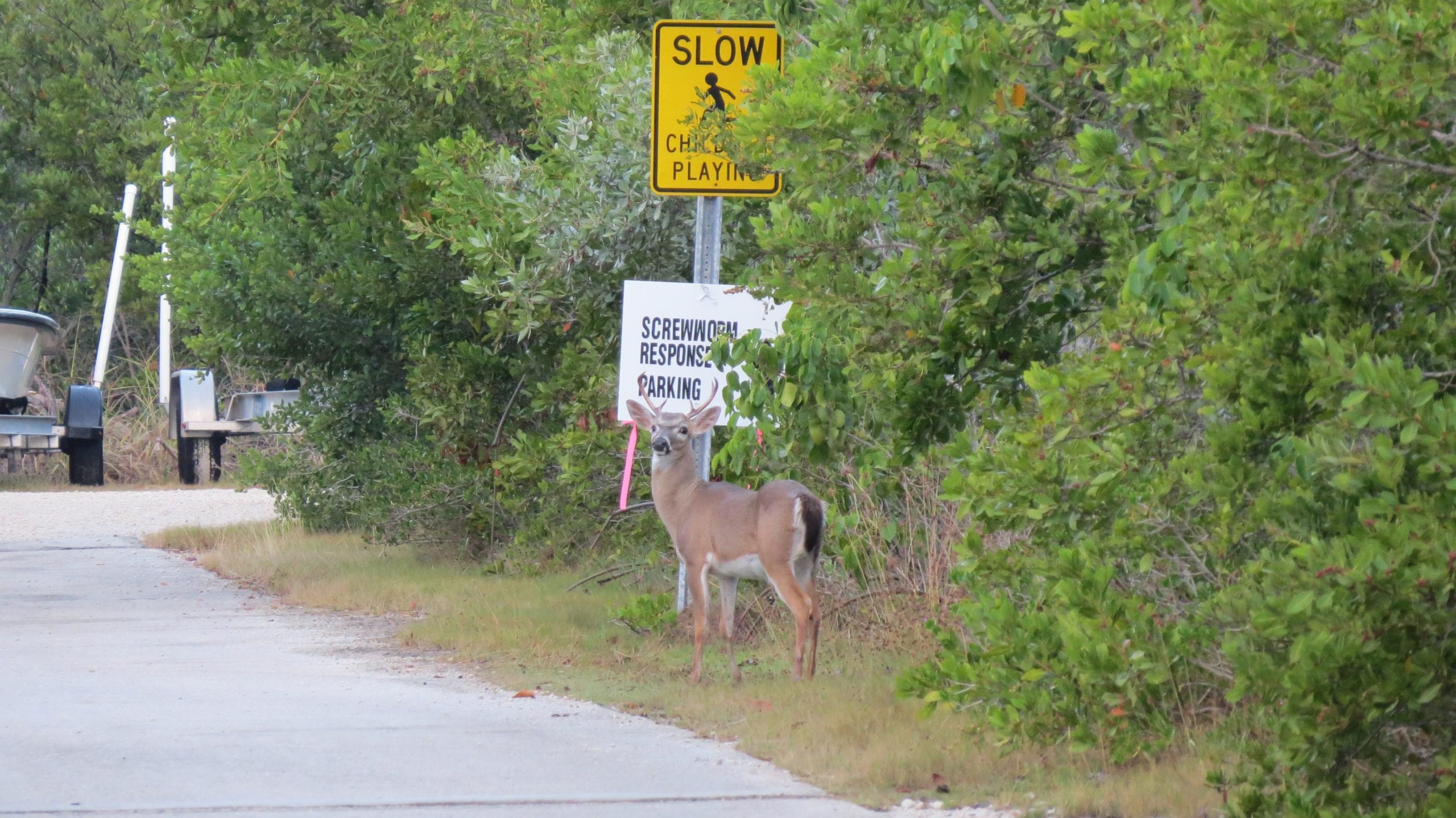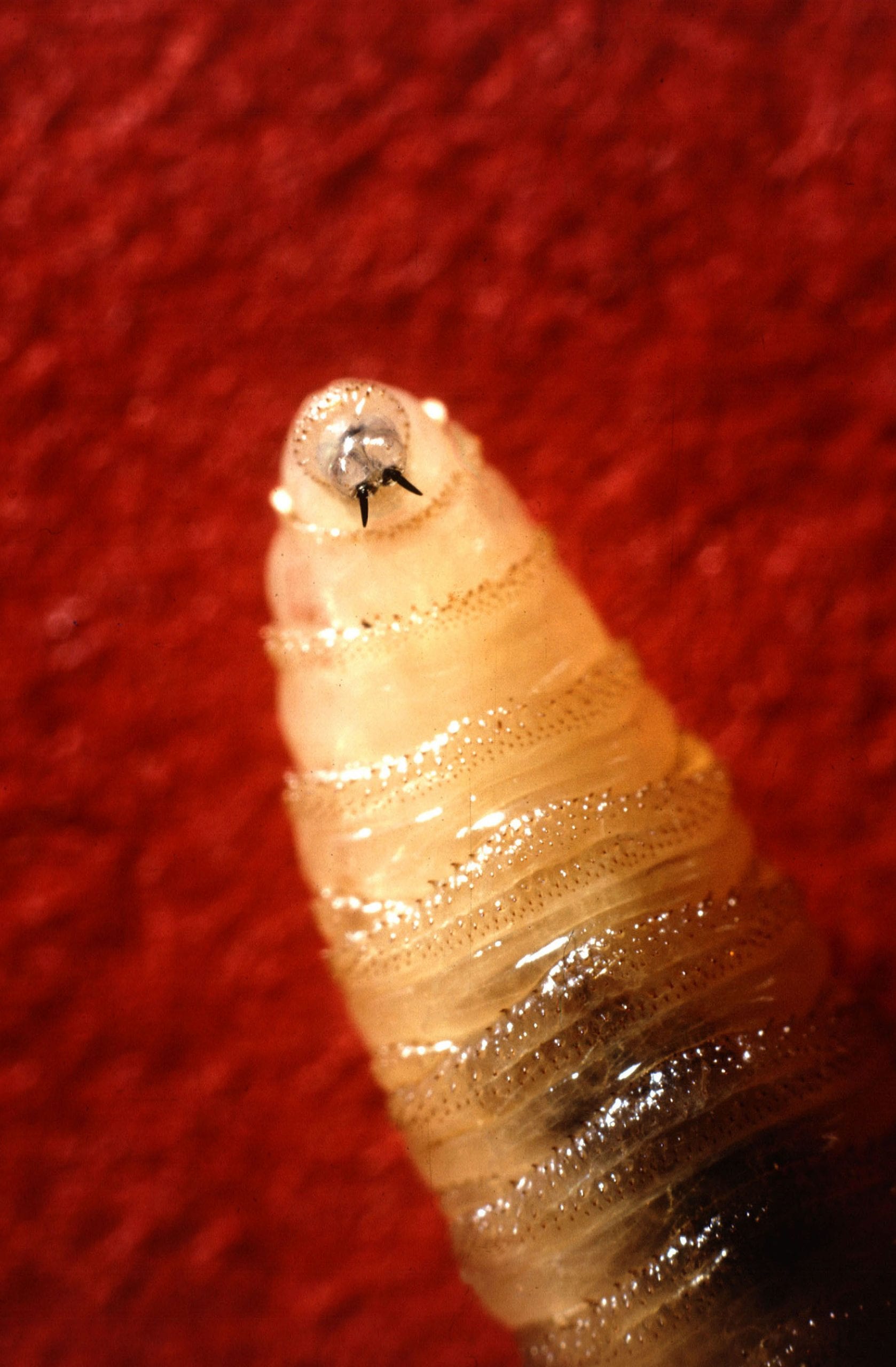It's never a good sign when the deer in real life appear more gruesome than those depicted on the infamous zombie apocalypse TV series, ‘The Walking Dead'. On October 3, 2016 the United States Department of Agriculture (USDA) confirmed that the flesh-eating New World Screwworm had infested endangered Key Deer in the National Key Deer Refuge in Pine Key, Florida. This is the first local screwworm infestation in the U.S. in more than 30 years. Key Deer are the smallest subspecies of the North American white-tailed deer, and the only large herbivore in the Florida Keys. The screwworms inflict gory injuries that incapacitate the deer, which quickly earned them the nickname of ‘zombie deer'.
“The screwworms have turned their victims into ‘zombie deer’, leaving them with half-eaten heads as the maggots eat their flesh and slowly kill them within 14 days.” – Anneta Konstantindies, Daily Mail
New World screwworms, named because their ridges resemble the spiral shape of a household screw, are the larvae of the Cochliomyia hominivorax fly. These aggressive pests look like harmless house flies, but their larvae feed on the living flesh of all mammals, including humans. Infestations are transmitted when a female fly lays her eggs on an open wound of an unsuspecting warm-blooded animal. One female can deposit up to 400 eggs at a time, and up to 2,800 eggs during her lifespan. The eggs hatch into larvae that burrow into the flesh and feed on living tissues and fluids. More female screwworm flies are attracted to the wound site by the smell, and the infestation can magnify quickly. After approximately a week of feasting, the larvae fall to the ground and burrow into the soil to pupate. The adult screwworm fly emerges from the ground after 3-5 days and mates, completing the life cycle and perpetuating the disease.
By late November 2016, the screwworm outbreak had killed more than 100 Key Deer, about 15% of the entire world population. Wildlife managers and government officials focused largely on saving the endangered herd, while minimizing potential impacts to other wildlife species. However, it became apparent that it wasn't just the deer being ravaged by the flesh-eating worms. Pets in the Florida Keys also started to turn up with gruesome infections. Nine cases were reported from local veterinary clinics: seven dogs, one cat, and one pig. By January 2017, screwworm was found on Florida's mainland in a stray dog roaming around in Homestead, about 35 miles southwest of Miami. Another major concern with screwworm infestations is the zoonotic potential.
To get the outbreak under control, the USDA partnered with U.S. Fish and Wildlife Services, Florida Department of Agriculture and Consumer Services, and Florida's Monroe County to eradicate the screwworm flies and prevent further spread of the disease. The USDA revived a proven eradication method used during their Screwworm Eradication Program (SEP) in 1957. The SEP eradicated screwworm from the U.S. using a form of biological control called the Sterile Insect Technique, which takes advantage of the fly's biology. This process involves releasing infertile male screwworm flies into the environment. The female flies only mate once in their lifetime, and when they mate with these infertile males, no offspring are produced. As more sterile screwworm flies are released, the population of fertile screwworm flies decreases until the population dies out. When sterile flies are released, elimination of New World screwworm is achieved within three life cycles after the last positive detection.

The Sterile Insect Technique is one of the greatest entomological success stories of all time and also one of the least well known peaceful uses of atomic energy. Today, the USDA and its partners maintain a permanent sterile fly barrier at the Darien Gap between Panama and Colombia to prevent the establishment of any screwworm flies that enter from South America. The ongoing management of screwworm flies is a critical stabilizer of agricultural trade. Not only is this pesky worm devastating to animal welfare, it costs the U.S. livestock industry about $20 million a year.
To date, the USDA has released close to 154 million sterile screwworm flies. On March 23, 2017 the USDA announced the successful eradication of New World screwworm from Florida, putting an end to the ‘zombie deer'. Luckily, no human cases of New World screwworm were reported during this outbreak. The source of Florida's screwworm infestation is still a mystery. Many speculate that increased trade and tourism with Cuba, where active infestations still occur, may have brought these flesh-eating pests back to the U.S. Government officials will continue passive surveillance to ensure any new findings are quickly identified.
Image Credit Sources:
Key Deer buck – USFWS via Flikr
Deer infested with New World screwworms via Flikr
Screworm larva – USDA via Flikr
Screwworm fly – Kathleen Franklin via Flikr
 Lydia Anderson is a Dual DVM-PhD graduate student at the University of Georgia. Since completing her PhD in Infectious Diseases, she has been working on her DVM at the College of Veterinary Medicine with an emphasis in public health and translational medicine. She plans to use her training to help address the questions and challenges facing One Health due to emerging and zoonotic infectious diseases. When she is not busy learning how to save all things furry and playing with test tubes, Lydia can be found either freestyle cooking for her friends and family or binge watching Netflix with her rescue pup, Luna. More from Lydia Anderson.
Lydia Anderson is a Dual DVM-PhD graduate student at the University of Georgia. Since completing her PhD in Infectious Diseases, she has been working on her DVM at the College of Veterinary Medicine with an emphasis in public health and translational medicine. She plans to use her training to help address the questions and challenges facing One Health due to emerging and zoonotic infectious diseases. When she is not busy learning how to save all things furry and playing with test tubes, Lydia can be found either freestyle cooking for her friends and family or binge watching Netflix with her rescue pup, Luna. More from Lydia Anderson.
About the Author
-
athenssciencecafehttps://athensscienceobserver.com/author/athenssciencecafe/April 17, 2020
-
athenssciencecafehttps://athensscienceobserver.com/author/athenssciencecafe/April 12, 2020
-
athenssciencecafehttps://athensscienceobserver.com/author/athenssciencecafe/April 3, 2020
-
athenssciencecafehttps://athensscienceobserver.com/author/athenssciencecafe/March 30, 2020











